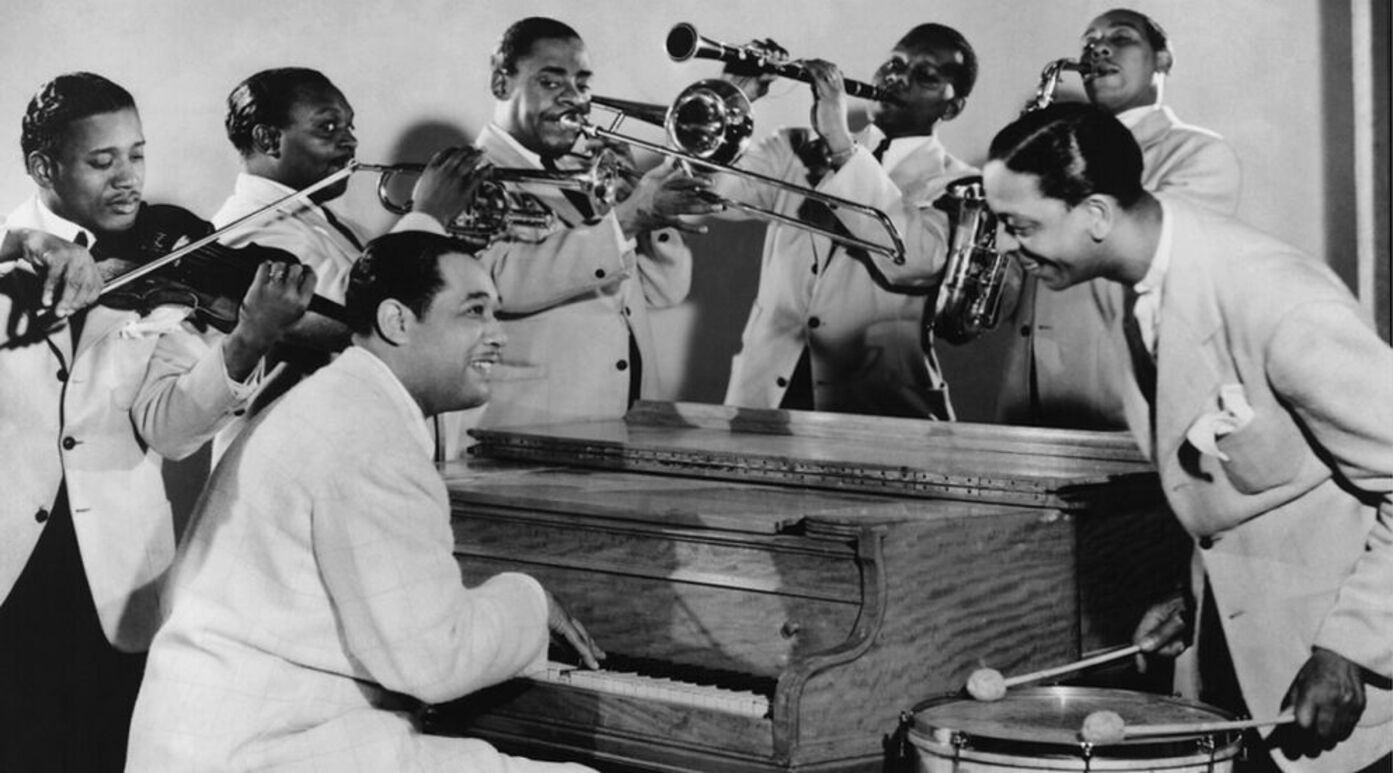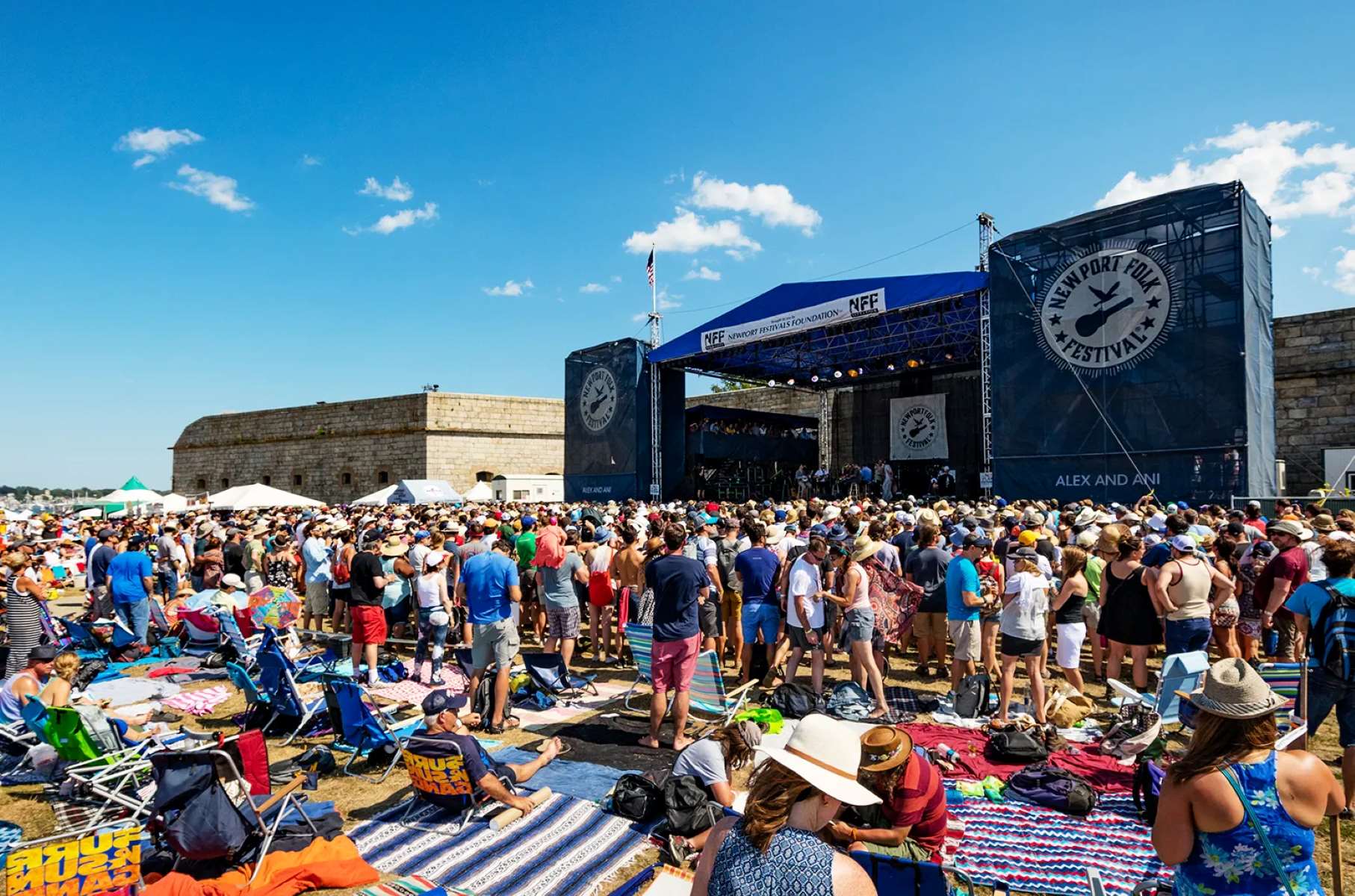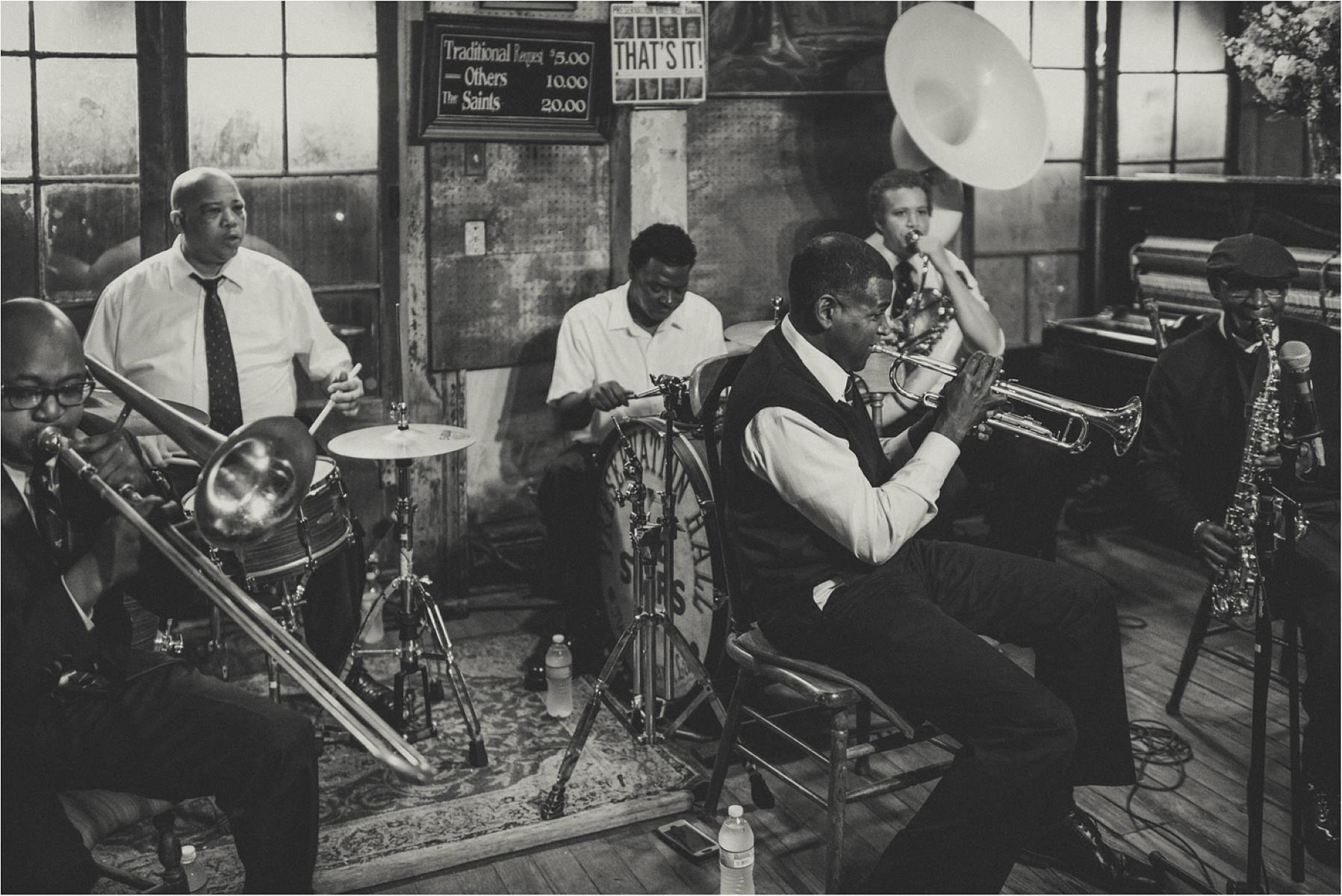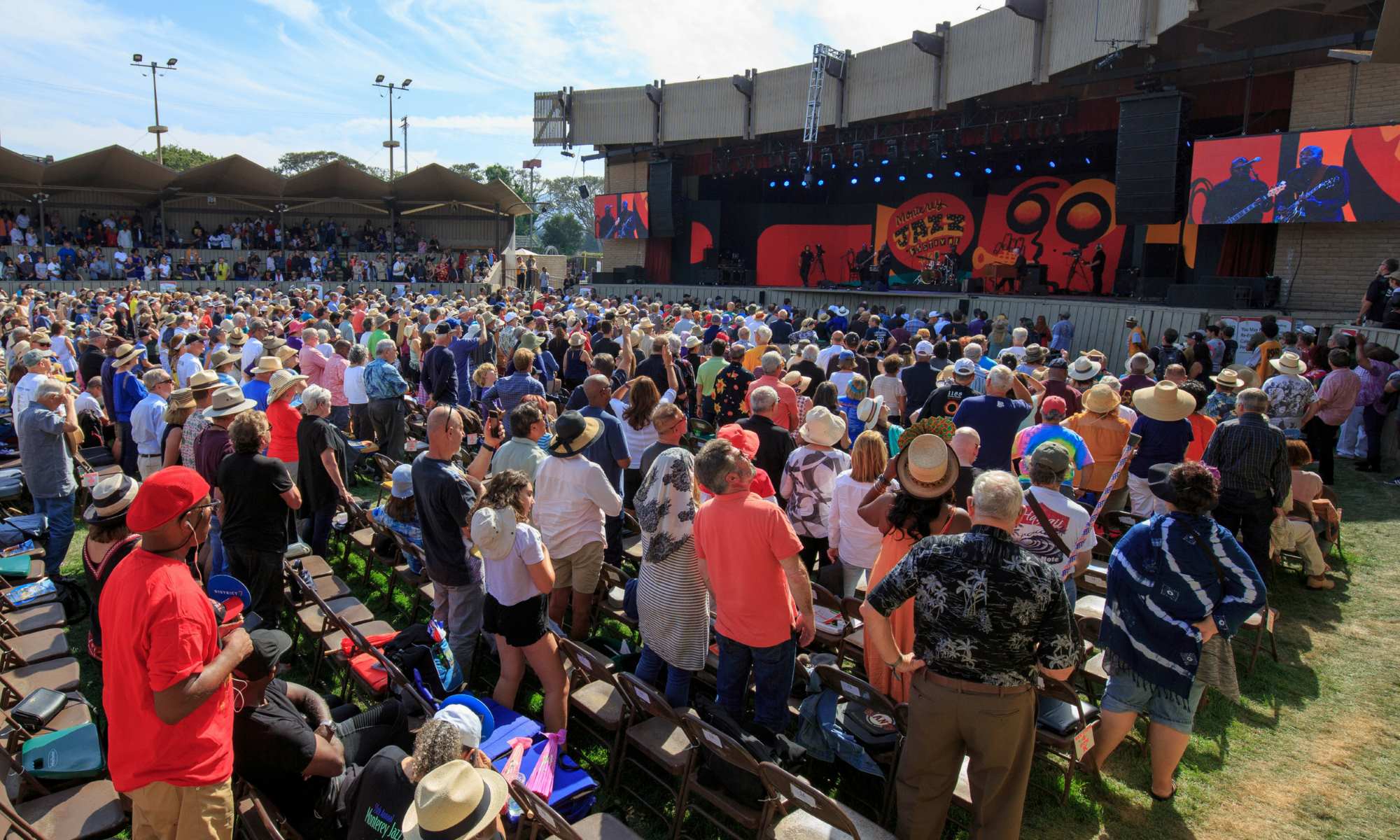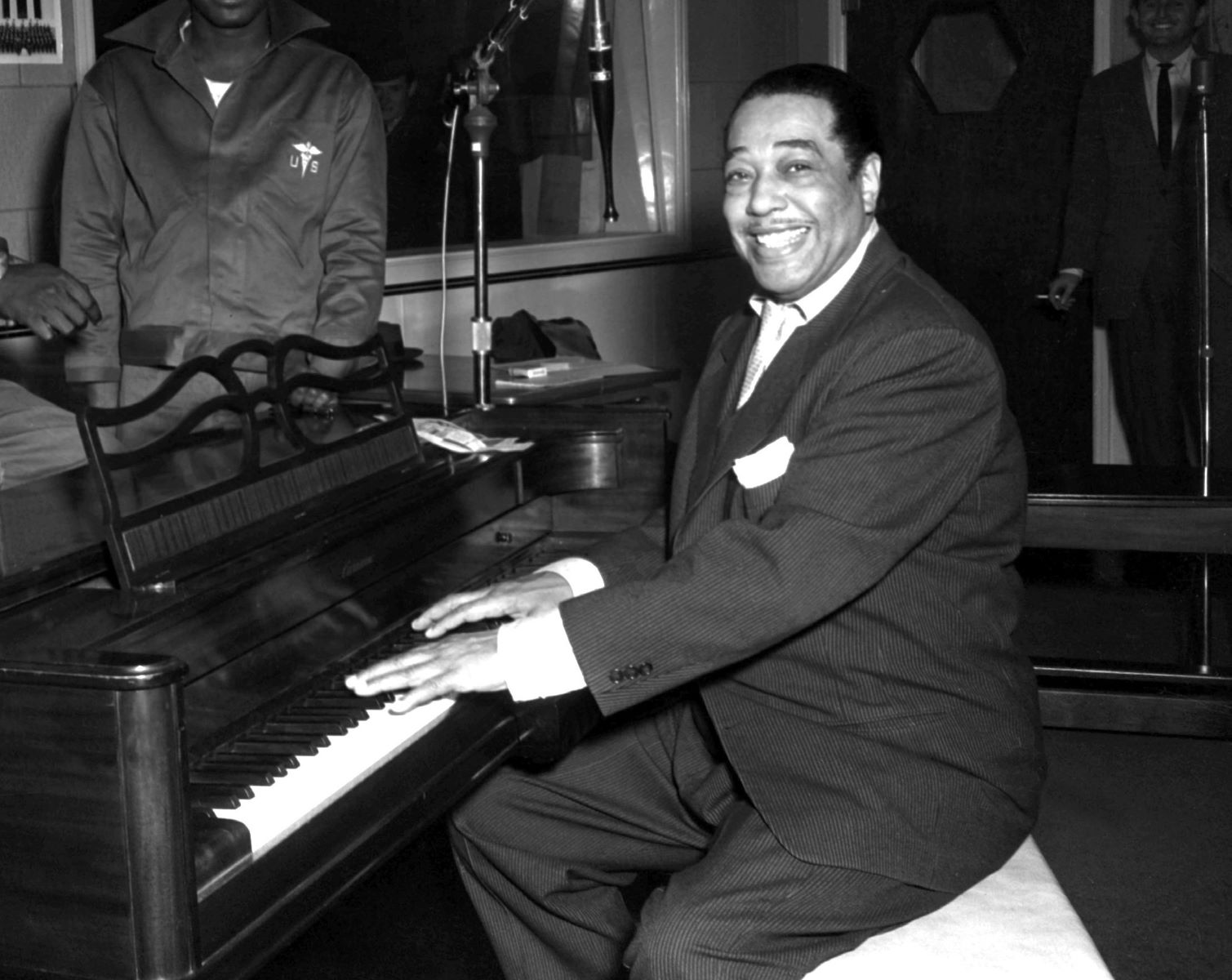

Jazz
When Was Latin Jazz Popular
Modified: January 22, 2024
Discover the popularity of Latin Jazz throughout history and explore its impact on the music industry. Uncover when this genre became a favorite among jazz enthusiasts.
(Many of the links in this article redirect to a specific reviewed product. Your purchase of these products through affiliate links helps to generate commission for AudioLover.com, at no extra cost. Learn more)
Table of Contents
Introduction
Latin jazz is a genre of music that combines the rhythmic and melodic elements of jazz with Latin American musical traditions, creating a vibrant and dynamic fusion of styles. It emerged in the United States in the early 20th century, influenced by the influx of Latin American immigrants and their rich musical heritage. Latin jazz has since become a significant and influential genre, captivating audiences with its infectious rhythms, improvisation, and cultural blend.
Latin jazz captures the essence of cultural exchange and collaboration. It celebrates the fusion of African, European, and Indigenous musical traditions that have shaped Latin American music throughout history. The genre’s energetic beats and colorful melodies offer a unique musical experience that transcends language and borders.
The development of Latin jazz has been shaped by visionary artists who have pushed the boundaries of musical expression. Their creativity and innovation have paved the way for subsequent generations, ensuring the genre’s continued vitality and relevance.
In this article, we will delve into the origins of Latin jazz, explore its development and pioneers, discuss its peak of popularity, examine its decline and subsequent revival, and take a look at the vibrant contemporary Latin jazz scene. By understanding the evolution of this genre and appreciating its cultural significance, we can gain a deeper appreciation for the beauty and complexity of Latin jazz.
Origins of Latin Jazz
The origins of Latin jazz can be traced back to the early 20th century in the United States, where a vibrant cultural exchange was taking place between African American and Latin American communities. As Latin American immigrants settled in major American cities, they brought their musical traditions, rhythms, and instruments with them, blending them with the existing jazz scene.
The fusion of African American jazz and Latin American music gave rise to a new and exciting genre that would come to be known as Latin jazz. The rhythmic complexities and improvisational nature of jazz were combined with the infectious rhythms of Afro-Cuban, Brazilian, and other Latin American musical styles.
One of the key figures in the development of Latin jazz was the legendary musician and bandleader Jelly Roll Morton. In the 1920s, Morton incorporated Latin American rhythms and instruments into his compositions and arrangements, creating a unique sound that would lay the foundation for the genre.
Another influential figure in the early days of Latin jazz was percussionist Chano Pozo. Collaborating with jazz legends such as Dizzy Gillespie and Charlie Parker, Pozo introduced Afro-Cuban rhythms and traditions into their music, resulting in groundbreaking recordings that showcased the fusion of jazz and Latin American music.
The rise of the big band era in the 1930s and 1940s further propelled the popularity of Latin jazz. Bandleaders such as Machito, Tito Puente, and Mario Bauza integrated Latin rhythms into their arrangements, creating a rich and vibrant sound that captivated audiences.
The incorporation of Latin American musical elements into jazz not only added new flavors and textures but also introduced a fresh cultural perspective. The syncopated rhythms, distinctive percussion, and unique melodic patterns of Latin music brought a sense of excitement and energy to jazz, expanding its sonic palette.
As Latin jazz continued to evolve, other Latin American musical influences, such as bossa nova from Brazil and salsa from Puerto Rico, further enriched the genre. Today, Latin jazz remains a powerful testament to the cultural exchange and synergy between different musical traditions, bringing people together through the universal language of music.
Development and Pioneers
The development of Latin jazz was driven by the vision and innovation of pioneering musicians who pushed the boundaries of musical expression and paved the way for the genre’s growth. These individuals blended the rhythmic intricacies of Latin American music with the improvisational nature of jazz, creating a unique and captivating fusion.
One of the key pioneers of Latin jazz was the Cuban percussionist and bandleader Tito Puente. Known as the “King of Latin Music,” Puente was highly influential in popularizing Latin jazz in the United States during the 1950s and 1960s. His musical arrangements, which incorporated elements of mambo, cha-cha-cha, and other Latin American rhythms, captivated audiences and helped propel the genre to new heights of popularity.
Another pivotal figure in the development of Latin jazz was trumpeter and composer Dizzy Gillespie. Gillespie’s collaborations with Cuban percussionist Chano Pozo gave birth to the groundbreaking Afro-Cuban jazz movement. Through their innovative compositions and fiery performances, they introduced the infectious rhythms of Afro-Cuban music to a wider audience and expanded the possibilities of jazz improvisation.
The contributions of Brazilian musicians cannot be overlooked in the development of Latin jazz. Figures such as Antonio Carlos Jobim, João Gilberto, and Stan Getz popularized the bossa nova sound, which fused samba rhythms with jazz harmonies. This fusion captured the attention of international audiences and brought a new and laid-back sensibility to Latin jazz.
Alongside the prominent names, there were countless other musicians who made valuable contributions to the development of Latin jazz. Pianist and composer Eddie Palmieri brought his unique blend of Afro-Cuban rhythms and jazz harmonies, while percussionist Mongo Santamaria incorporated elements of rumba and Afro-Cuban folk music into his compositions. These musicians, along with the countless others who pushed boundaries, were instrumental in shaping the vibrant and diverse landscape of Latin jazz.
Latin jazz continued to evolve and thrive in the 20th century, with artists like Chick Corea, Poncho Sanchez, and Arturo Sandoval carrying the torch for future generations. Their innovative approaches and fierce dedication to the genre ensured its longevity and relevance in the ever-changing landscape of music.
Today, the legacy of these pioneers lives on, inspiring new generations of musicians to explore the intersection of jazz and Latin American rhythms. Their contributions have cemented Latin jazz as a distinct and influential genre that continues to captivate audiences worldwide.
Latin Jazz’s Peak of Popularity
Latin jazz reached its peak of popularity during the mid-20th century, captivating audiences and becoming a significant force in the music industry. The genre experienced a surge in mainstream recognition and commercial success, influenced by the cultural vibrancy of the time and the rising interest in world music.
One of the key factors contributing to Latin jazz’s popularity was the crossover appeal of its infectious rhythms and captivating melodies. The genre’s fusion of jazz improvisation with Latin American musical traditions created a fresh and exciting sound that appealed to both jazz aficionados and those new to the genre.
During this golden era, Latin jazz artists gained recognition on a global scale. Tito Puente, with his undeniable talent and charisma, became an international star, captivating audiences with his dynamic stage presence and energetic performances. He brought Latin jazz to mainstream consciousness and popularized it among diverse audiences.
Additionally, collaborations between Latin jazz artists and mainstream jazz musicians further elevated the genre’s popularity. Iconic albums such as “Getz/Gilberto,” featuring Stan Getz and João Gilberto, with musical contributions from Antonio Carlos Jobim, introduced the bossa nova sound to a wide audience and played a pivotal role in the worldwide success and recognition of Latin jazz.
The peak of Latin jazz’s popularity led to increased visibility in concert venues, music festivals, and recording studios. Latin jazz ensembles and big bands became regular fixtures in clubs and concert halls, delighting audiences with their vibrant performances and inviting rhythmic interplay.
Moreover, Latin jazz found its way into popular culture through films and television. Its lively and energetic sound became synonymous with the joy and rhythm of Latin American culture, making it a natural choice for soundtracks and dance sequences.
Latin jazz’s peak of popularity also coincided with the rise of the salsa movement. The infectious rhythms and spirited energy of salsa music, heavily influenced by Latin jazz, gained significant international attention. Artists like Fania All-Stars and Willie Colón blended Latin jazz elements with salsa, creating a fusion that dominated the airwaves and dance floors.
While Latin jazz’s moment in the spotlight was undoubtedly influential and celebrated, it also faced challenges. Commercialization and the pressure to conform to mainstream expectations sometimes led to the dilution of the genre’s authenticity. However, the impact of this peak period continues to resonate in the contemporary Latin jazz scene, with artists paying homage to its rich legacy while infusing it with modern elements.
Latin jazz’s peak of popularity showcased the genre’s ability to bridge cultures, break down barriers, and ignite a passion for music. It remains an important chapter in the history of jazz, demonstrating the enduring power of cross-pollination and cultural exchange in the world of music.
Decline and Revival
After experiencing a peak of popularity during the mid-20th century, Latin jazz faced a period of decline in the following decades. Various factors contributed to this decline, including changes in popular music trends, shifting cultural interests, and a waning mainstream interest in jazz as a whole.
As the music industry evolved and new genres emerged, Latin jazz found itself competing for attention with other popular music styles. The rise of rock, disco, and electronic music in the 1970s and 1980s shifted the cultural landscape, drawing focus away from jazz and its fusion genres.
Furthermore, the commercialization of music during this period led to a homogenization of styles, as record companies focused on producing mainstream hits rather than supporting the unique and diverse voices within Latin jazz. As a result, many influential Latin jazz artists struggled to find widespread commercial success, leading to a decline in visibility and recognition.
Despite this decline, Latin jazz experienced a revival in the 1990s and early 2000s, ushering in a new era of appreciation and exploration. This revival was sparked by a renewed interest in the genre’s rich history, as well as the emergence of a new generation of talented and innovative musicians.
One of the key drivers of the Latin jazz revival was the increased accessibility of music through the internet and digital platforms. This allowed independent artists to reach a global audience and connect directly with fans, bypassing the traditional gatekeepers of the music industry.
Additionally, collaborations between Latin jazz artists and popular musicians from other genres breathed new life into the genre. Artists like Carlos Santana, Buena Vista Social Club, and Bebel Gilberto incorporated Latin jazz elements into their music, exposing the genre to a wider audience and creating cross-genre fusions that captivated listeners.
The revival of Latin jazz also saw the emergence of new talents who pushed the boundaries of the genre. Artists such as Chucho Valdés, Gonzalo Rubalcaba, and David Sánchez infused traditional Latin rhythms with contemporary jazz sensibilities, creating a fresh sound that resonated with audiences.
Furthermore, festivals and venues dedicated to Latin jazz played a crucial role in reviving interest in the genre. Events like the Newport Jazz Festival, the Montreux Jazz Festival, and the Havana Jazz Festival provided platforms for both established and emerging artists to showcase their talents and connect with fans.
The revival of Latin jazz not only brought renewed attention to the genre’s rich history but also sparked an exploration of new sounds and collaborations. Today, Latin jazz continues to evolve, incorporating elements of hip-hop, electronic music, and world music, while staying true to its cultural roots.
As Latin jazz experienced its decline and subsequent revival, it proved to be a resilient and adaptive genre, demonstrating its ability to transcend trends and connect with audiences across generations. The revival of Latin jazz ensured that the genre’s legacy would be preserved, celebrated, and continued by future generations of musicians.
Contemporary Latin Jazz Scene
The contemporary Latin jazz scene is dynamic, diverse, and thriving, with a new generation of musicians carrying on the tradition while pushing the boundaries of the genre. These artists draw inspiration from the rich history of Latin jazz while incorporating modern influences, resulting in a fusion of styles that reflects the ever-changing musical landscape.
One notable aspect of the contemporary Latin jazz scene is the exploration of cross-cultural collaborations. Musicians from different parts of the world are coming together to create innovative and unique sounds. Latin jazz is being blended with elements of Afrobeat, funk, reggae, and even electronic music. These collaborations not only showcase the versatility of Latin jazz but also foster cultural exchange and understanding.
Technology has played a significant role in the evolution of Latin jazz. With the advent of home recording studios and digital distribution platforms, independent artists now have more control and freedom to create and share their music. This has led to a proliferation of diverse and experimental projects within the genre.
In recent years, there has been a resurgence of interest in traditional Latin jazz styles, such as Afro-Cuban jazz, Brazilian jazz, and salsa jazz. Artists are revisiting the classic compositions and arrangements of the genre’s pioneers, infusing them with fresh interpretations and contemporary sensibilities. This has sparked a renewed appreciation for the roots of Latin jazz among both new and seasoned listeners.
The contemporary Latin jazz scene also celebrates the contribution of women musicians. Female instrumentalists, vocalists, and composers are making their mark and challenging the traditionally male-dominated jazz world. Their voices bring a unique perspective and enrich the genre with their talents and artistic vision.
Music festivals dedicated to Latin jazz, such as the Afro-Latin Jazz Festival in New York City and the International Jazz Plaza Festival in Havana, provide platforms for artists to showcase their talent and connect with fans. These festivals attract both established musicians and rising stars, fostering a vibrant community and facilitating the exchange of ideas and collaboration.
Moreover, Latin jazz education programs and workshops are on the rise. Institutions and organizations are committed to preserving the legacy of Latin jazz by imparting knowledge and skills to aspiring musicians. These programs help nurture the next generation of Latin jazz artists, ensuring that the genre continues to thrive for years to come.
As the contemporary Latin jazz scene continues to evolve, it remains a testament to the enduring power and relevance of the genre. The fusion of traditional Latin rhythms with modern influences creates a captivating and boundary-breaking sound, captivating audiences around the world and keeping the spirit of Latin jazz alive.
Conclusion
Latin jazz has carved its own unique place in the music world, captivating audiences with its infectious rhythms, vibrant melodies, and rich cultural blend. The genre’s origins can be traced back to the early 20th century, when African American and Latin American communities in the United States came together to create a dynamic fusion of jazz and Latin American music.
Throughout its history, Latin jazz has experienced both periods of peak popularity and moments of decline. However, the genre has proven to be resilient, continuously evolving and adapting to changing musical landscapes. Pioneering musicians like Tito Puente, Dizzy Gillespie, and Antonio Carlos Jobim paved the way for the genre’s growth and left a lasting legacy that continues to influence contemporary Latin jazz artists.
Today, the contemporary Latin jazz scene is thriving, with a new generation of artists pushing the boundaries, exploring cross-genre collaborations, and infusing modern influences into the traditional Latin jazz sound. The scene embraces diversity, gender equality, and cultural exchange, creating a dynamic and inclusive musical community.
While the genre has experienced a decline at certain times, it has always experienced a revival as new artists and audiences discover its timeless appeal. The internet, digital technologies, and independent platforms have empowered Latin jazz musicians to reach a global audience and explore new creative paths.
The contemporary Latin jazz scene celebrates the genre’s rich heritage while incorporating modern influences, resulting in a fusion of styles that reflects the vibrant, ever-changing musical landscape. It showcases the continued relevance and resilience of Latin jazz, proving that it is more than a genre – it is a cultural force that connects people across borders, languages, and generations.
As we delve into the captivating world of Latin jazz, we discover a genre that is not only about music but also about cultural exchange, unity, and celebration. Latin jazz transcends boundaries and embraces diversity, showcasing the power of collaboration and the beauty of blending musical traditions.
Whether it’s the soulful grooves of Afro-Cuban jazz, the lyrical melodies of Brazilian jazz, or the fiery rhythms of salsa jazz, Latin jazz continues to captivate audiences worldwide. Its unique fusion of jazz improvisation with Latin American musical traditions creates a sound that is both familiar and exciting, inviting listeners to embrace the spirit of musical exploration.
As we celebrate the rich history and vibrant present of Latin jazz, we are reminded of its enduring legacy and the profound impact it has had on the world of music. Latin jazz is a true testament to the power of cultural fusion, artistic expression, and the universal language of rhythm and melody.

